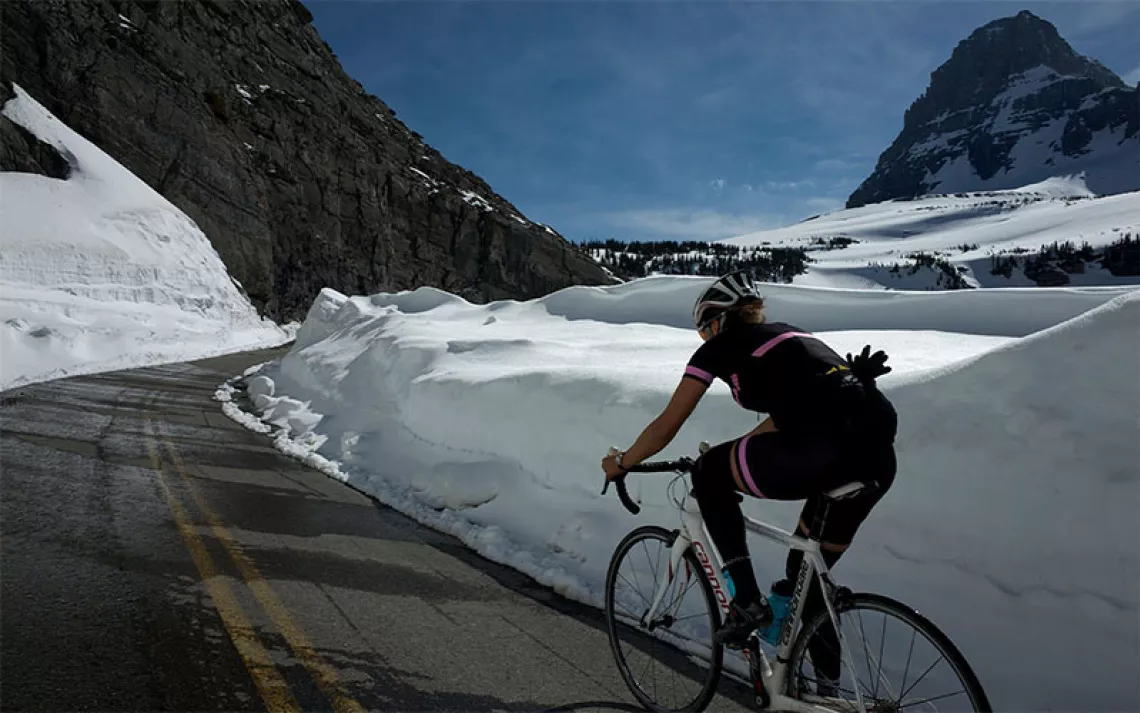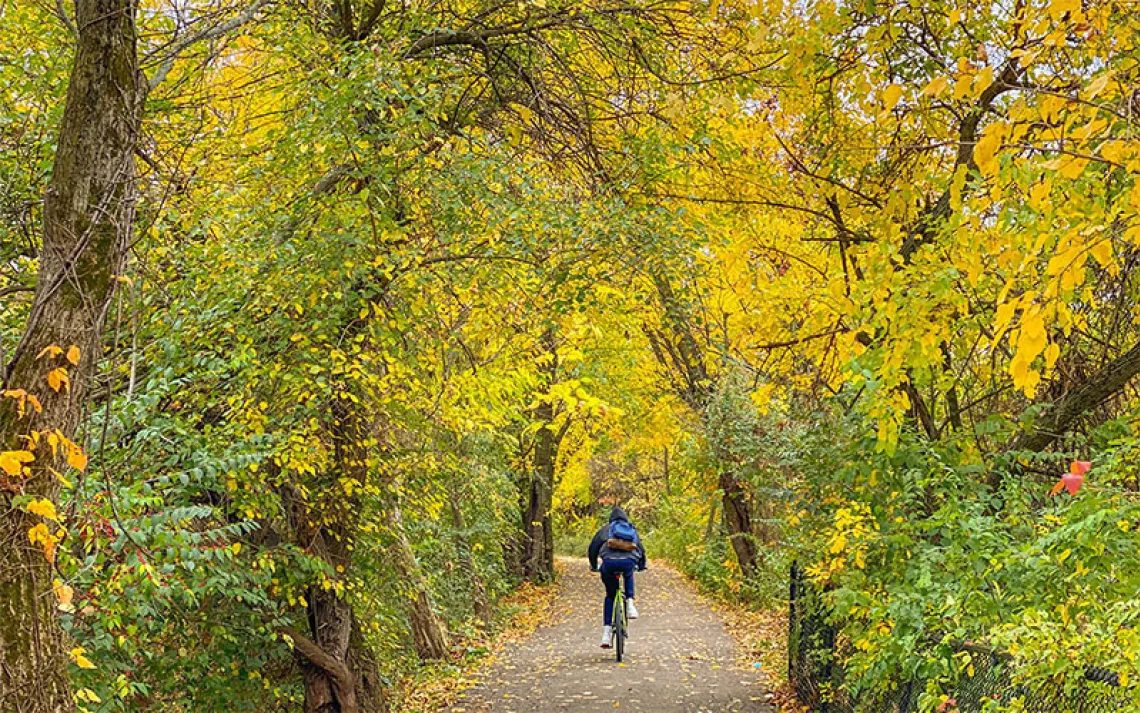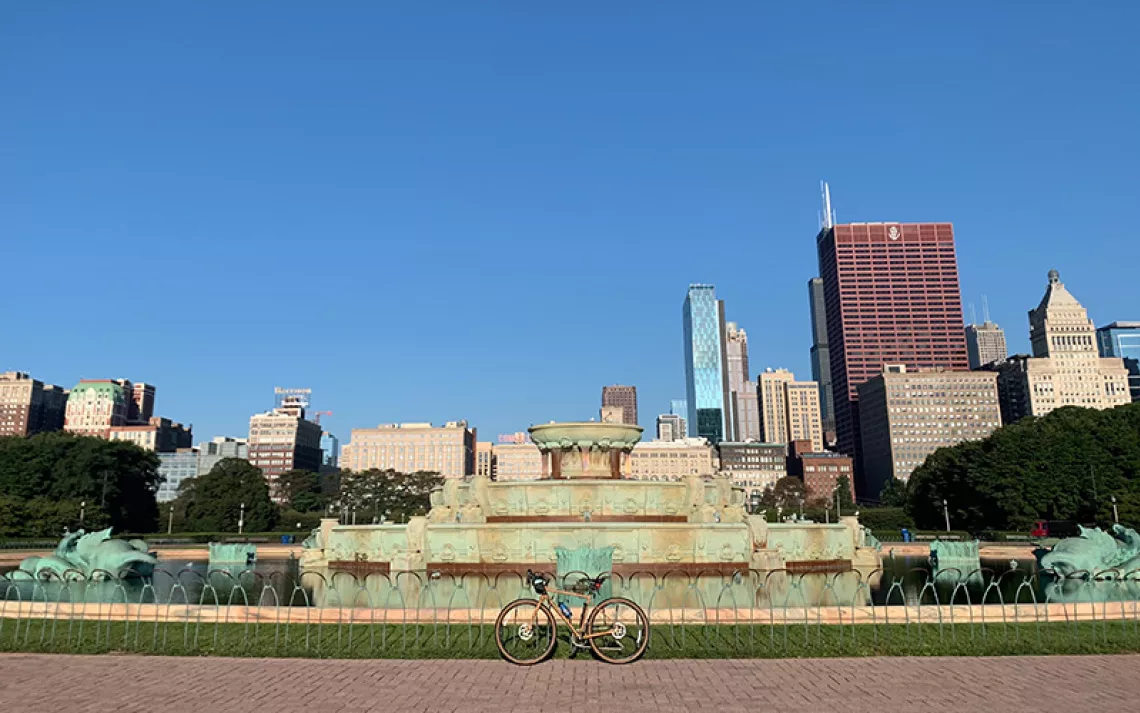5 Ways Not to Get Killed While Cycling
Be prepared, visible, predictable, and assertive. But don’t be a jerk.

Photo by fazon1/iStock
Recently, I wrote a helpful guide for motorists called “5 Ways Not to Kill Cyclists.” Several drivers wrote to complain that cyclists do share some responsibility for keeping themselves alive. Of the 726 cyclists killed in collisions with motor vehicles in 2015, for example, more than half were not wearing helmets, and nearly a quarter were legally drunk.
Here are five things cyclists can do to protect themselves.
1. Be prepared
Start out with a bicycle in good working order—good brakes, decent tires, reliable drivetrain. Basic bicycle maintenance isn’t hard, but if you’re not into it you should ask your LBS (local bicycle shop) to give you a tune-up. And do wear your helmet—according to the Insurance Institute for Highway Safety, doing so reduces your odds of head injury by 50 percent. Anti-helmet cyclists argue that in countries with high cycling rates, few people wear helmets. But that’s not the cause of greater ridership; it’s an effect. In addition to safety in numbers, high cycling nations have lots of safety infrastructure, like protected bicycle lanes. Until those are common here, you need protection for your noggin.
2. Be visible
If you don’t want a car to hit you, it helps if the driver is able to see you. While cycling is a healthy activity, with many laudable environmental benefits, virtue is not a protective cloak. Cycling-safety experts sometimes recommend riding as though one were invisible—i.e., never assuming that drivers will see you. But actually being invisible—cycling at night without lights while wearing dark clothing, for example—is a poor strategy for reaching old age. Night riders should have, at a minimum, blinking lights fore and aft, and reflective or fluorescent clothing. Better yet is to be lit up like a Christmas tree. In recent years, cycling lights have gotten way brighter, energy efficient, and inventive; many can be charged via USB port so cheapskates don’t have to reckon whether their life is worth a couple of AA batteries.

Sign up to receive Sierra News & Views
Get articles like this one sent directly to your inbox weekly.
With this action you affirm you want to receive Sierra Club communications and may vote on policy designated by the Sierra Club Board.
 Courtesy bicyclesafe.com Another aspect of visibility is riding where motor vehicles can see you. That’s why you should never ride on the sidewalk—you’re more likely to get nailed by a car turning right into a driveway or at an intersection. When stopping at a traffic light or stop sign, don’t position your bike immediately to the right of a car or—especially!—a truck or bus, because they are less likely to see you there and more likely to turn right into you. (Like cyclists, you can’t depend on drivers to always signal.) National Highway Traffic Safety Administration data shows that 83 percent of fatal crashes involve cyclists being impacted by the front of a motor vehicle, but in the case of large trucks, only half of impacts are with the front of the vehicle, and 29 percent with its right side. Avoid this blind spot by stopping either behind a stopped vehicle or well ahead of it.
Courtesy bicyclesafe.com Another aspect of visibility is riding where motor vehicles can see you. That’s why you should never ride on the sidewalk—you’re more likely to get nailed by a car turning right into a driveway or at an intersection. When stopping at a traffic light or stop sign, don’t position your bike immediately to the right of a car or—especially!—a truck or bus, because they are less likely to see you there and more likely to turn right into you. (Like cyclists, you can’t depend on drivers to always signal.) National Highway Traffic Safety Administration data shows that 83 percent of fatal crashes involve cyclists being impacted by the front of a motor vehicle, but in the case of large trucks, only half of impacts are with the front of the vehicle, and 29 percent with its right side. Avoid this blind spot by stopping either behind a stopped vehicle or well ahead of it.
3. Take the lane
One of the scariest aspects of cycling is the prospect of being “doored,” when a passenger in a parked vehicle flings open a left-hand door without looking into the path of an oncoming rider. Protected bike lanes would prevent that problem, but while we wait for them, cyclists should ride far enough to the left of parked cars to avoid the door zone. Depending on the width of the lane you’re riding in, this life-saving stratagem may require you to occupy it fully—what’s known as “taking the lane.” Most vehicle codes instruct bicycles to ride as far to the right “as is practicable,” but if there isn’t room for you to avoid being doored and for cars in the lane to pass you safely, you should take the lane.
4. Be predictable
A wonderful thing about cycling is its near-effortless mobility. It’s possible to weave around traffic, skip over to the sidewalk, hop back into traffic—even ride the wrong way down the street. Possible, but not recommended if you hope to collect your Social Security. Cyclists will ride more safely if they’re as predictable as possible; when you’re going to do something different, you need to signal your intentions. (As we all know, there's nothing motorists pay more attention to than hand signals from bicyclists.) Cars need to know what you’re doing—especially if you’re turning left. Even after you’ve signaled for a left turn, try to make eye contact with the driver of any opposing vehicle to make sure they’ve seen you.
5. Don’t be a jerk
If the women will excuse us for a minute, gents, we need to talk. There’s something about having that Y chromosome that makes the per capita fatality rate for males, according to NHTSA, eight times higher than for females. Those killed are mostly older men; the average age of cyclists killed in traffic in 2014 was 45, a figure that has steadily increased from 2005, when it was 39. Non-fatal accident victims skew younger: most males who are injured in crashes are 20 to 24 years old.
This isn’t just because more men cycle than women. According to the Alliance for Biking and Walking, women comprise 27 percent of bicycle commuters. While NHTSA doesn’t speculate why men are overrepresented in their fatality statistics, a likely explanation is that they are more prone to risky behavior. I don’t want to blame the victims here, but we’ve all witnessed countless examples of reckless riding that, sadly, does not always turn out to be wreckless: running red lights, riding the wrong way, riding two or three abreast when other vehicles are trying to pass. The road is not the place to work out your testosterone issues. Jerky behavior contributes to cycling’s unfortunate image as an occupation for daredevils, not ordinary people trying to get around. So when you ride, be respectful of your fellow travelers—it will encourage more people to join you on the road, and increase the chances that you’ll get where you’re going safe and sound.
 The Magazine of The Sierra Club
The Magazine of The Sierra Club



